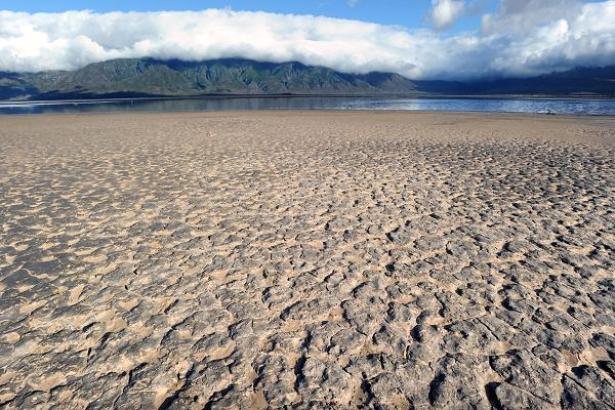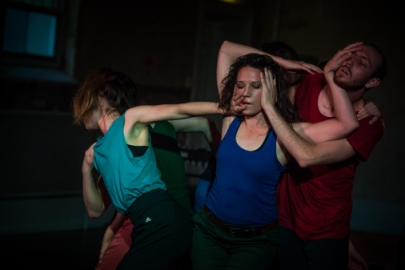This post comes from the Artists and Climate Change Blog
The seventh in a year-long series on artists who are making the topic of water a focus of their work and on the growing number of exhibitions, performances and publications that are popping up in museums, galleries and public spaces around the world with water as a theme.
______________________________
Music reflects the cultural mood of a society and, at the same time, is a powerful medium for promoting change and encouraging action. Throughout American history, songs of dissent have influenced the outcome of wars and social movements. During the 1960s and 1970s, voices like Woody Guthrie, Sam Cooke, Bob Dylan, Pete Seeger, Phil Ochs, Joan Baez, Jimi Hendrix, Nina Simone, James Brown, Marvin Gaye and numerous others engaged an entire generation in protesting against an undeclared war with no end in sight and for civil rights with songs like We Shall Overcome, The Times They Are a Changing, Ohio, What’s Going On, Change Gonna Come and We Shall Not Be Moved, etc. Outside the United States, inspiring songs such as L’Internationale, a 19th century anthem of revolution worldwide, continues to call to the oppressed to rise up against tyranny. Today, artists like Beyoncé (Freedom) and Kendrick Lamar (Alright) are reaching global audiences with current anthems of discontent against racial and social injustice. By embedding a message in music, a single voice can inspire millions.
Understanding just how effectively music can shape public opinion and behavior, the government of Cape Town, South Africa, in partnership with the finance firm Sanlam, has sponsored an innovative project that directly impacts the conservation of the city’s critically diminishing supply of water. They commissioned ten of South Africa’s leading musical stars to adapt their existing songs into a 2-minute format to help residents limit their daily showers to exactly 120 seconds in compliance with current regulations. The 2-minute songs were consolidated into an album that is free and easily accessible for downloading on a dedicated website and on YouTube. According to instructions on the 2-Minute Shower Song website: “start the song and turn up the volume…when the song ends, so should the shower.â€

South African rapper Kwesta recording a song for the “2-Minute Shower Songs†album. Courtesy of Sanlam.
The 2-Minute Shower Songs are not merely a response to the abstract concept of conserving water for a shortage projected to occur sometime in the distant future. Cape Town is on the verge of becoming the first major city in the world to completely run out of water within a few months. Day Zero, the date when the city’s reservoirs fall to 13.5 % capacity, is currently set to occur on July 15, 2018. The city’s drastically reduced water supply is the result of three consecutive years of very low rainfall. Of the 50 liters or about 13 gallons of water a day that is the recommended allotment to residents, 20 liters or 40% of the daily water limit is consumed during a 2-minute shower. Without severe conservation and significant rainfall, the taps will be turned off on Day Zero, forcing the entire population of 4 million to line up for daily water rations.

Theewaterskloof Dam, a major source of water for Cape Town on January 25, 2018, in Villiersdorp, South Africa. Courtesy of Brenton Geach, Gallo Images, Getty Images.
The 2-Minute Shower Song project is the brainchild of the King James Group, a creative team that developed the original concept of a billboard campaign into a way of “tapping into almost everyone’s hidden pleasure of singing in the shower.†In a February 8, 2018 interview for the South African on-line publication, Bizcommunity, Susan van Rooyen and Moe Kekana of King James Group explained the creative process behind how the campaign was devised:
The project originally began as a billboard brief, trying to figure out how we could communicate or give people a way to save water. And when the City of Cape Town urged everyone to cut down water in the bathroom specifically, we found our insight: Many of us, whether we like to admit it or not, sing in the shower. And if we could use that to manage how long people spent in the shower, we could help save water. But an idea that size wasn’t going to fit on a billboard. And so, the #2minuteshowersongs were born: Songs you can sing along to, but that also tell you when your shower time is up.
Rooyen and Kekana noted that the artists’ commitment to the project was “phenomenal.†In response to a question about the recording process and the results of the campaign, they summarized:
In just four days they recorded the ten songs and produced an album in under two weeks. The sense of urgency in the songs, the urgency to make it happen, was a reflection of the crisis. There is something so pure, yet so powerful about music. And that’s what we needed to really make our message heard.
Our campaign spread further than we anticipated. Not only were Capetonians singing along to shorten their showers, but they were singing on the radio, and even created their own versions of our shower songs in an effort to keep water use down. Word also spread across international waters with our campaign being featured on the climate change section of Time.com and on BBC radio.
The ten artists and their songs include: Kwesta (Boom Shaka Laka); Mi Casa (Nana); Good Luck (Taking it Easy); Fifi Cooper (Power of Gold); Francis Van Coke (Dit raak beter); Jimmy Nevis (Day Dream); Rouge (Déjà vu); Desmond & and the Tutus (Teenagers); Youngsta (Wes Kaap); and Springbok Nude Girls (Bubblegum on My Boots).

Promotional photos of artists, courtesy of Sanlam.
The 2-Minute Shower Song website includes all of the songs and a “Behind the Scenes†video showing a brief excerpt of the recording process. Musician Good Luck expressed his motivation for participating in the project by stating, “I worry that if everyone stays nonchalant about the seriousness of the situation, then they’re going to wake up one day and realize there’s no water coming out of the taps.â€
(Top image: Courtesy Associated Press.)
______________________________
Susan Hoffman Fishman is a painter, public artist, writer, and educator whose work has been exhibited in numerous museums and galleries throughout the U.S. Her latest bodies of work focus on the threat of rising tides caused by climate change, the trillions of pieces of plastic in our oceans and the wars that are predicted to occur in the future over access to clean water. She is also the co-creator of two interactive public art projects: The Wave, which addresses our mutual need for and interdependence on water and Home, which calls attention to homelessness and the lack of affordable housing in our cities and towns.
Artists and Climate Change is a blog that tracks artistic responses from all disciplines to the problem of climate change. It is both a study about what is being done, and a resource for anyone interested in the subject. Art has the power to reframe the conversation about our environmental crisis so it is inclusive, constructive, and conducive to action. Art can, and should, shape our values and behavior so we are better equipped to face the formidable challenge in front of us.









 For those of you that are new to
For those of you that are new to  The Lorne project has been created in collaboration with Ashlee Hughes, assistant designer Pia Guilliatt and the local community. Lorne residents, Helen Smith and Colin Leitch have been particularly instrumental in procuring soil, plants and objects for the stage, with more than 45 boxes of plants actively growing in preparation for the Lorne Sculpture Biennale Opening on the 17th of March.
The Lorne project has been created in collaboration with Ashlee Hughes, assistant designer Pia Guilliatt and the local community. Lorne residents, Helen Smith and Colin Leitch have been particularly instrumental in procuring soil, plants and objects for the stage, with more than 45 boxes of plants actively growing in preparation for the Lorne Sculpture Biennale Opening on the 17th of March. Immerse yourself in the heart of the Blues on The Living Stage. Join us in celebrating an appreciation for all things nature through the lyrical poetry of front man Mike Robinson Koss (vocals/harmonicas/lyrics) and his dynamic ensemble. Complete with vintage guitar tones and bluegrass/ragtime style, this local band combines environmental themes with character and pizazz that will have you tapping your feet and asking for more.
Immerse yourself in the heart of the Blues on The Living Stage. Join us in celebrating an appreciation for all things nature through the lyrical poetry of front man Mike Robinson Koss (vocals/harmonicas/lyrics) and his dynamic ensemble. Complete with vintage guitar tones and bluegrass/ragtime style, this local band combines environmental themes with character and pizazz that will have you tapping your feet and asking for more. Randall has a long history of playing guitar on the south west coast in various incarnations, most notably with the
Randall has a long history of playing guitar on the south west coast in various incarnations, most notably with the  EASTER Weekend: 31st March & 1st April:
EASTER Weekend: 31st March & 1st April: